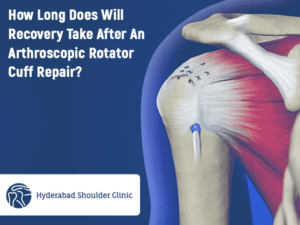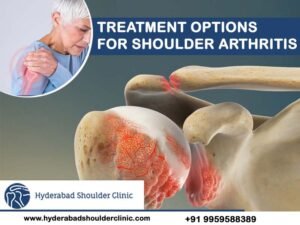Now no more worries about large incisions and a longer recovery period after shoulder surgery. Shoulder surgeries are being performed with the most advanced technique, Arthroscopy. To know more, consult Dr Chandra Sekhar, one of the best arthroscopic shoulder surgeons in Hyderabad.
The shoulder is a major and important joint in the human body. In addition, it is the most used joint. The shoulders are essential to perform several functions like lifting objects, performing overhead activities, throwing, pulling, pushing and many more.
It is a widely used joint, so it is more vulnerable to injuries than other joints. Earlier, shoulder joint surgeries were complex, and it took more time to recover and regain the lost range of motion. Fortunately, Arthroscopy has eliminated this problem. With the help of this technique, patients have been able to have surgery faster, stay in the hospital for a shorter period, and recover and return to their regular routines faster.
What is Shoulder Arthroscopy?

Arthro means “Joint”, and Scope means “To view”.
Arthroscopy of the shoulder involves inserting a tiny camera known as an Arthroscope inside the shoulder joint and the surrounding area to locate, diagnose, and repair problems with the tissues. A small incision made in your skin is used to insert specialised instruments during this arthroscopy procedure.
Doctors can see all the structures inside your shoulder projected on a high-definition television monitor through a camera that uses magnifying lenses, a light source, and water flow with the arthroscope.
Thus, the doctor will be able to diagnose the problem with your shoulder joint and treat it. The invention of shoulder arthroscopy has provided many advantages compared to older open surgical techniques.
The advantages of arthroscopic surgery are as follows:
- Smaller incisions
- The scars are minimal
- Less pain
- A hospital stay of less than one or two days
- Recovery of functional abilities more quickly
- Reduced swelling and pain
- Fewer risks and complications
- Improved motion
When is shoulder arthroscopy recommended?
The most common problems after a shoulder injury are pain, stiffness, restricted motion, and sleep disturbances due to pain. An orthopaedic shoulder surgeon generally performs shoulder arthroscopy surgery to treat a wide range of shoulder problems like:
- Bursitis and synovitis: Inflammation or thickening of the joint lining surrounding tendons.
- Tendonitis
- Bicipital tendonitis: The biceps tendon is torn or inflamed.
- Calcific tendonitis: the presence of calcium deposits in the rotator cuff tendon
- Rotator cuff tears: These tears affect the muscles and tendons that attach the arm to the shoulder.
- Impingement: The humeral head and acromion become weak or narrow. You may experience pain when you raise your arm towards the head.

- Labral tears: The labrum is responsible for holding the shoulder in place. When this labrum becomes worn out or torn, or detached, Arthroscopy is recommended.
- Acromioclavicular joint arthritis: An inflammation or arthritic condition affecting the joint between the collarbone and acromion.
- Loose bodies: To remove the piece of cartilage that breaks free and floats in the joint.
- Shoulder instability: History of partial dislocation or total dislocation of the shoulder joint
- Frozen Shoulder: The long-term immobilisation of the shoulder joint causes frozen shoulder
Before considering shoulder arthroscopy, doctors suggest non-surgical treatment like rest, physical therapy, medications, and steroid injections for some patients. If the condition does not improve with these treatments and in severe cases, shoulder arthroscopy is recommended. Depending on the severity of the injury, our orthopaedic surgeon, Dr Chandra Sekhar, will advise you on the best treatment that suits your condition. Call +91 99595 88389 to make an appointment right away.





